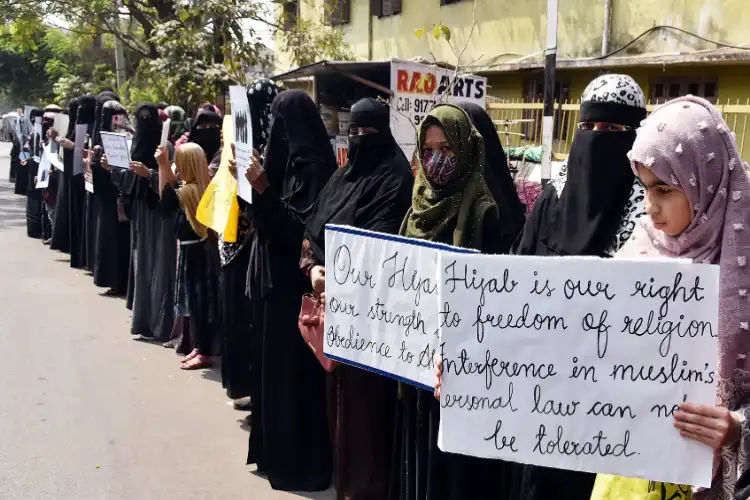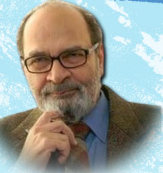
 Saeed Naqvi
Saeed Naqvi
What does the controversy surrounding hijab have to do with the 1973 Yom Kippur war? Well, the quadrupling of oil prices by the Sheikhs of Arab caused an upheaval.
The Sunday Story
At the other end, petrodollars were attracting Indian labour, initially from Malabar in Kerala. These blue-collar workers earned enough in a short time to be able to build in Kerala the garish ‘Dubai’ houses which intruded on a traditionally simple skyline. Since the Kerala Muslims were among the first to turn up in quest of the GCC El Dorado, the resentment was tinged by inter-religious jealousy.
Muslims being Muslim soon lost the edge which made them objects of ire. The more educated Hindus and Christians outshone them in white-collar jobs.
That non-Muslims registered greater success later did not erase the initial “Dubai house” resentment because the politician had by now incorporated it into his repertoire. This was a propitious time for a politician to prosper on religious
antipathy. Gen. Zia ul Haq’s Nizam-e-Mustafa caused anxiety on this side. The broad brush act of conversion in Meenakshipuram boosted divisions sky-high.
At the other end in London, publishers were gauging the market for books of high scalability. This is the time when exceptionally generous advances were made for books like Among The Believers, by V.S. Naipaul (1981) and Satanic Verses by Salman Rushdie (1988). Both expose Islam to satirical scrutiny.
Larger than life's focus on Islam, assisted by the media and the book industry, gradually transformed it into Islamism. This very Islamism received a further boost with the success of the Islamic Revolution in Iran.
Since Ayatullah Khomeini projected himself as the leader of the Muslim world, there was deep consternation in Riyadh which considered itself the central pole of the Islamic world. It controlled Mecca and Medina, the two Holiest places. The “control” of the holy shrines had been opened up for questioning by a dramatic occupation of the Mecca mosques by a wing of Akhwan ul Muslimeen or the Muslim Brotherhood. This incident traumatized the Muslim world.
The occupation of the Mecca mosque and the Islamic revolution coincided. Both pronounced the institution of monarchy in Saudi Arabia as anti-Islamic. With anxious alacrity, the House of Saud declared themselves as “keepers of the holy shrines,” toning down the royalty.
Even so, fierce competition ensued between Tehran and Riyadh on who was purveying true Islam. Since one of the items on the Ayatullah's agenda was to erase all traces of North Tehran fashion patronized by the Shah, the hijab acquired a very high priority. To this day all hotels in Tehran have a plaque at the entrance requesting women guests to “respect Iranian culture and wear a hijab in public places.”
The Arab Mullah was not going to allow the Ayatullahs to walk away with the trophy of Islamism and its manifestations like the hijab. It is difficult to explain to friends who have not traveled to Beirut, Baghdad, Cairo, Damascus during the peaceful years of the Cold War that these cities once defined gracious living.
Why go that far back? I was seated with Ambassador Rajan Abhyankar, who knows Syria like the back of his hand, at a popular wayside Schwarma joint in Damascus at the start of recent troubles when he suddenly spun around and pointed to three young women wearing white hijabs. “You see, this is the result of the Iranian revolution.”
Syria, after all, is the land of Comrade Michel Aflaq, founder of the Arab Ba’athism which took root in Syria and Iraq. In their aversion to Islamic ritual they were not very different from Turkey’s Mustafa Kemal Pasha, a generation earlier. It turns out that the thoughts of Hasan al Banna, Sayyid Qutb, and Maulana Maududi, tilted towards Salafism, clearly had durability. After all, Turkey’s first lady had to fight her way to wearing a hijab which the Kemalist culture resisted. Tayyip Erdogan is a Brother (Akhwan) in disguise.
The rapid expansion of the hijab is in direct proportion to televised Islamophobia which burst onto the scene in 1991, the first post-Soviet expedition called Operation Desert Storm. Peter Arnett of CNN inaugurated from the terrace of Baghdad’s Al Rashied hotel a new era of global media.
For the first time in history, a war was brought live into our drawing rooms. One telecast divided the world into two antithetical sets of audiences – the victorious West and the Muslim world, humiliated and angry. This continued through the post-9/11 wars giving acceleration to be wearing of the hijab. The Indian media followed in their steps.
Missile strikes against Osama bin Laden in Afghanistan launched on October 18, 2001, coincided with the arrival of Narendra Modi in Ahmedabad to take over as Chief Minister. The Ahmedabad pogrom of 2002 took place in the shadow of American fireworks. Hindu-Muslim ill will was apace with galloping Islamophobia globally.
The hijab in India is tangled in the threads mentioned above, but it is also an expression of choked anger against the perceived excesses of Hindutva against the world’s largest minority.
The minority factor aggravates the problem to an extent that their Lordships appear not to have noticed. The hijab protests in Iran are a self-confident assertion by women aware of their rich heritage. Girls of South Kannada and Udipi belong to a minority under unspeakable pressure.
There is no hijab problem in Pakistan or Bangladesh because the state neither opposes nor has any urge to promote it.
Trust the late Khushwant Singh to have put his finger on the nub of the matter. The festive atmosphere of the India-Pakistan cricket match at Lahore in 2003 was enhanced by Pakistani women turning up in formidable fashion – dark glasses, tinted hair, and blazing colours. The only lady in the VIP enclosure draped in the hijab happened to be Irfan Pathan’s mother.
ALSO READ: Rushdie’s assailant: “My Name Is Legion For We are Many”
